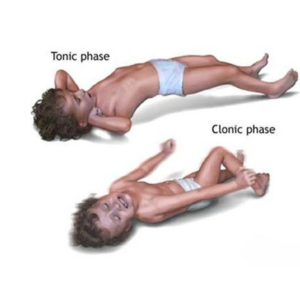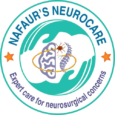Intractable Pain Syndromes
Intractable Pain Syndromes
Intractable pain syndromes refer to severe, persistent pain that does not respond to standard medical treatment, significantly impairing a child’s quality of life. These pain conditions may be neuropathic (nerve-related), central (brain/spinal cord-related), or complex regional pain syndromes (CRPS). In children, these conditions can lead to depression, social withdrawal, school absenteeism, and even physical disability. In Bangladesh, where pediatric chronic pain is often underdiagnosed or misattributed, specialized neurosurgical approaches are rarely offered. Dr. Md. Nafaur Rahman is a pioneer in introducing functional neurosurgical techniques for the management of pediatric intractable pain, offering compassionate, evidence-based solutions for children and families. 🌍 Intractable Pain in Bangladeshi Children – A Silent Epidemic Although less commonly discussed in children, chronic and intractable pain is not rare in Bangladesh. Children may suffer silently due to: 🧠 Brain or spinal cord injuries 🧬 Congenital malformations (e.g., tethered cord syndrome, Chiari malformation) 🔥 Nerve injury following trauma, burns, or surgery 🦴 Orthopedic deformities or musculoskeletal conditions ❗ Complications from tumors, infections, or inflammation 💉 Postsurgical pain syndromes 🧪 Complex Regional Pain Syndrome (CRPS) Unfortunately, many children are treated with long-term medications, including opioids, without exploring neurosurgical interventions that can offer long-term relief. ⚠️ Common Pediatric Intractable Pain Conditions Treated Neuropathic Pain Pain from damaged nerves, often burning, shooting, or stabbing Seen in spinal dysraphism, post-surgical states, or peripheral nerve injury Central Pain Syndromes Pain resulting from damage to the brain or spinal cord Often seen after stroke, brain tumors, or trauma Complex Regional Pain Syndrome (CRPS) A condition causing intense pain, swelling, and skin changes after minor injury May be disabling and distressing if not treated early Phantom Limb Pain (post-amputation) Seen after limb removal due to trauma or tumor Brain continues to perceive pain in the missing limb Cancer-related Pain In children with spinal or brain tumors Often severe, persistent, and difficult to manage medically Postoperative Chronic Pain Pain that persists long after healing from surgery Often linked to nerve damage or central sensitization “Pain is not just a symptom—it’s a disease of its own, especially in children. We must treat it aggressively, compassionately, and scientifically.” — Dr. Md. Nafaur Rahman 🧪 Diagnosis and Pain Mapping Dr. Nafaur Rahman uses an integrated diagnostic process to evaluate complex pain syndromes: 🧠 MRI/CT scan – To identify structural causes in brain/spine ⚡ Nerve conduction studies (NCS/EMG) – To assess nerve integrity 🩺 Functional assessments – Including pain scales, gait analysis, and quality of life evaluations 💬 Multidisciplinary evaluation with psychologists, physiotherapists, and pediatricians 🛠️ Neurosurgical and Multimodal Pain Management 1. 💊 Medical Therapies (as first-line) Gabapentin, Pregabalin, Amitriptyline – Neuropathic pain agents Non-steroidal anti-inflammatory drugs (NSAIDs) – For inflammation Anticonvulsants and antidepressants – As adjuvants Opioids – With extreme caution in severe cancer-related pain 2. ⚙️ Neurosurgical Interventions a) Intrathecal Drug Delivery Systems (ITB Pump) Delivers pain-relieving drugs (e.g., Baclofen, Morphine) directly into the spinal fluid Highly effective in central pain and spasticity-related pain b) Dorsal Root Entry Zone Lesioning (DREZotomy) Ablation of hyperactive pain transmission areas in the spinal cord Especially useful for brachial plexus avulsion or root injuries c) Cordotomy or Myelotomy Interrupts pain pathways in the spinal cord Reserved for unilateral or cancer-related pain syndromes d) Peripheral Nerve Stimulators or Neurolysis Helps in localized neuropathic pain after injury or surgery e) Deep Brain Stimulation (DBS) For central pain resistant to all other treatments Still emerging in pediatric cases but promising in specific conditions 🧒 Rehabilitation and Psychological Support Managing intractable pain requires more than surgery. Dr. Nafaur’s holistic team ensures: 🧠 Cognitive Behavioral Therapy (CBT) for pain coping 🧘 Physiotherapy to reduce fear-avoidance and immobility 🧑🎓 Return-to-school support and social reintegration 🗣️ Parental counseling and caregiver education 🔁 Consequences of Untreated Pediatric Intractable Pain 📉 Severe reduction in quality of life 🧑🦽 Physical deconditioning and joint contractures 😔 Depression, anxiety, and school refusal 🔁 Overuse of opioids and long-term medications ❌ Social isolation and emotional trauma 👨⚕️ Why Choose Dr. Md. Nafaur Rahman? 🧠 Bangladesh’s foremost expert in pediatric functional neurosurgery for chronic pain 🏥 Based at National Institute of Neurosciences & Hospital (NINS) 🧒 Provides child-friendly, empathetic care at Bangladesh Paediatric Neurocare Centre ✅ Trained in ITB pumps, DREZotomy, and advanced neuromodulation techniques 🤝 Multidisciplinary collaboration with pediatric neurologists, psychologists, physiotherapists 🌐 Focused on accessible and ethical pain relief for all children across Bangladesh 📞 Help Your Child Live a Pain-Free Life Dr. Md. Nafaur Rahman Assistant Professor, Pediatric Neurosurgery, NINS Chief Consultant, Bangladesh Paediatric Neurocare Centre 📱 For Serial/Appointments: 📞 01912988182 | 📞 01607033535 🌐 Visit: www.neurosurgeonnafaur.com


